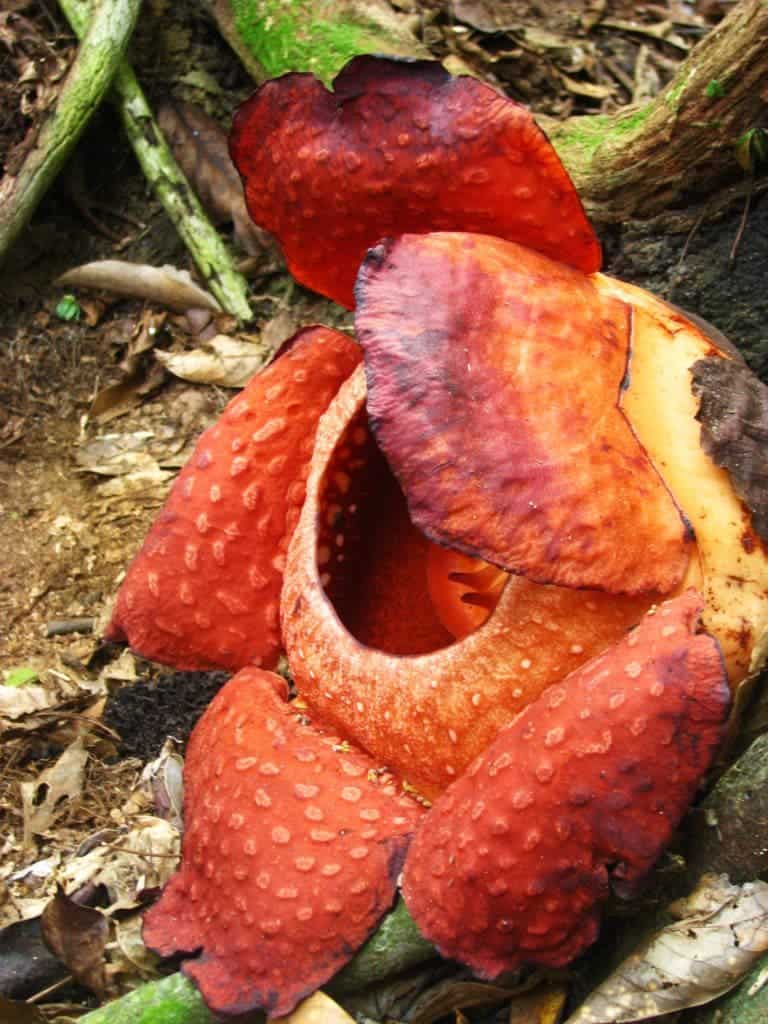It’s certainly huge, quite possibly the largest flower we’ve ever found — but it’s not exactly a sight to behold.

When it comes to flowers, Rafflessia tuan-mudae is not exactly what you would call pretty. Much like its famous cousin Rafflesia arnoldii, it is a “monster flower”: it has no leaves, stems or even roots. Oh, and it stinks. Really badly.
Rafflessia are parasite flowers, living on a particular vine. They have no ability to photosynthesize and instead, parasitize the vine to extract their nutrients, drawing food and water using long thin filaments.
They usually suck resources from the vine for a few years, before producing a bud that swells more and more, until it produces a flower that looks like a big, red, bucket. But if you thought that’s where the flowers’ peculiarities end, you’re in for a treat.
Rafflessia doesn’t just look and act very different from most flowers, it also smells very different. If you thought it smells anything like the flowers you know, forget it: it gives off a strong scent of rotting meat. Because it is so big and produces such a strong meaty scent, the flower attracts flies, which help pollinate it. Unlike most plants, which would rather be pollinated by bees or similar insects, Rafflessia has a preference for flies. It also steals genes from the vine it lives on, for reasons that are not yet clear.
So this stinky, parasitic, gene-stealing flower is possibly the biggest one on record. It was found in Sumatra, Indonesia, where some of the biggest Rafflessia have been found.
“This is the largest Rafflesia tuan-mudae in the world at 111 centimeters in diameter,” Khairi Ramadhan, section head of the West Sumatra Natural Resources Conservation Agency (BKSDA) for Conservation Area 1, told kompas.com on Wednesday.
The previous record of 107 cm was broken from a flower on the same host vine. It’s an unlikely coincidence, but, yet again — we don’t really know what drives some Rafflessia flowers to grow so big. There are many things we still don’t know about them, and yet they may already be disappearing. The restricted habitats and peculiar ways make the Rafflessia species very vulnerable, and several are already endangered.
As the forests around it are destroyed, the fate of Rafflessia is uncertain. In addition to habitat loss, these reproductive peculiarities are contributing factors to why many such species are endangered. We might lose these flowers before we even understand them.


